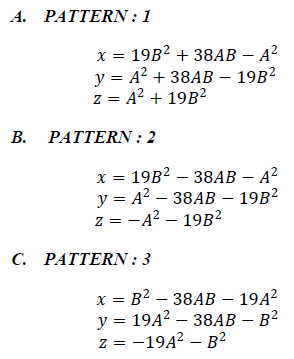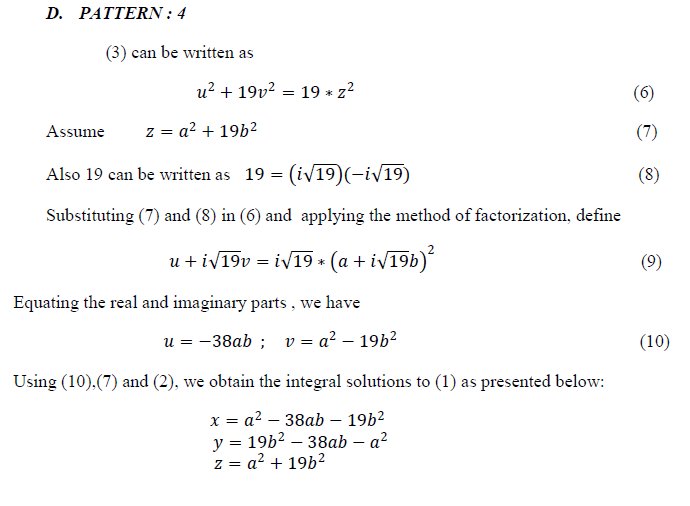ISSN ONLINE(2319-8753)PRINT(2347-6710)
ISSN ONLINE(2319-8753)PRINT(2347-6710)
| M.A.Gopalan1,V.Sangeetha2,Manju Somanath3 Professor, Department of Mathematics,Srimathi Indira Gandhi College, Trichy, India1 Assistant Professor, Department of Mathematics, National College, Trichy, India2 Assistant Professor, Department of Mathematics, National College, Trichy, India3 |
| Related article at Pubmed, Scholar Google |
Visit for more related articles at International Journal of Innovative Research in Science, Engineering and Technology
The ternary quadratic Diophantine equation 5 x2 + y2 − 9xy = 19z2 is analyzed for its patterns of non zero distinct integral solutions
Keywords |
| Integral solutions,Ternary quadratic |
| MSC 2000 subject classification number 11D09 |
INTRODUCTION |
| The Ternary Quadratic Diophantine Equation offers an unlimited field for research because of their variety [1, 2]. For an extensive review of various problems, one may refer [3-23]. This communication concerns with yet another interesting Ternary Quadratic Equation |
II.METHOD OF ANALYSIS |
| The ternary quadratic equation to be solved in integers is |
| It is noted that (1) can be satisfied by the following triples of integers (1141a,379a,419a),(-2294A,1895A,2095A),(151a,a,77a),(746A,5A,385A),(305T,94T,115T), (-679A,470A,575A),(346a,91a,137a),(-911A,455A,685A),(1469A,355A,595A), (-166a,71a,119a),(481a,70a,215a),(-71T,14T,43T). |
| Now,introducing the linear transformations |
| ïÿýïÿý = ïÿýïÿý + ïÿýïÿý ; ïÿýïÿý = ïÿýïÿý − ïÿýïÿý (2) |
 |
| which is equivalent to the system of equations |
 |
| It is observed that, by rewriting (4) suitably, one may arrive at the following three patterns of solutions to (1). |
 |
| However , we have another solution pattern which is illustrated below: |
 |
III.CONCLUSION |
| To conclude, one may search for other patterns of solutions to the equation under consideration. |
References |
|